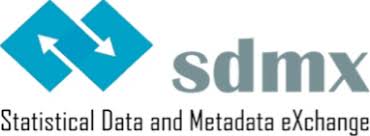As we work our way through different industries profiling the APIs we keep an eye out for some of the common data standards that exist across the landscape. As we were profiling more APIs for the market data section of the API Gallery™ we came across the Statistical Data and Metadata eXchange (SDMX) format, and are showcasing it here as part of our work to highlight the valuable ways in which providers are making data available.
Here is a little background on SDMX, and how it impacts the financial data sector:
SDMX, which stands for Statistical Data and Metadata eXchange is an international initiative that aims at standardizing and modernizing (industrializing) the mechanisms and processes for the exchange of statistical data and metadata among international organizations and their member countries.
SDMX is sponsored by seven international organizations including the Bank for International Settlements (BIS), the European Central Bank (ECB), Eurostat (Statistical Office of the European Union), the International Monetary Fund (IMF), the Organization for Economic Cooperation and Development (OECD), the United Nations Statistical Division (UNSD), and the World Bank.
These organizations are the main players at world and regional levels in the collection of official statistics in a large variety of domains (agriculture statistics, economic and financial statistics, social statistics, environment statistics etc.).
We will be documenting any other APIs we comes across which use the SDMX format. Helping further standardize the data sources we are making available, and provide us with another data point that we can expose as part of the API Gallery search. Adding to the ways in which we can publish and make data available, and standardize the format in which data is available in.
Having SDMX in our toolbox provides us with another way to search for relevant data sources. Allowing us to validate data that we discover, and prioritize it as part of our profiling and bench marking process. If there are any other data formats that you’d like to see profiled as part of the gallery, or there is a specific format that you apply to your data and rely on from another 3rd party data provide, we’d like to add it to our list–just let us know.



